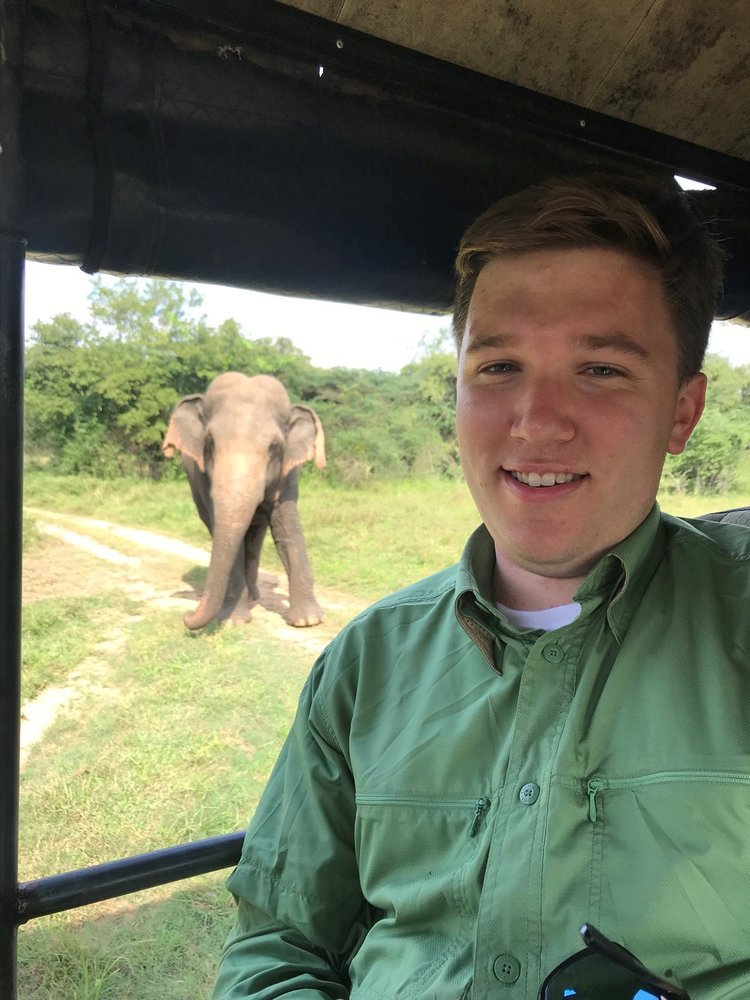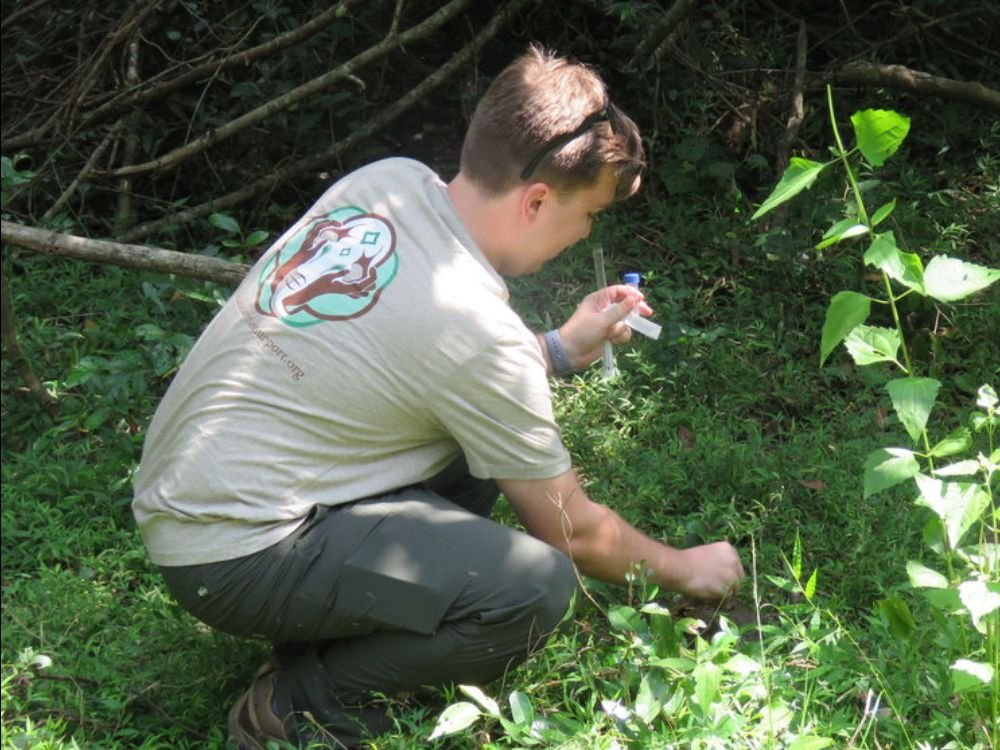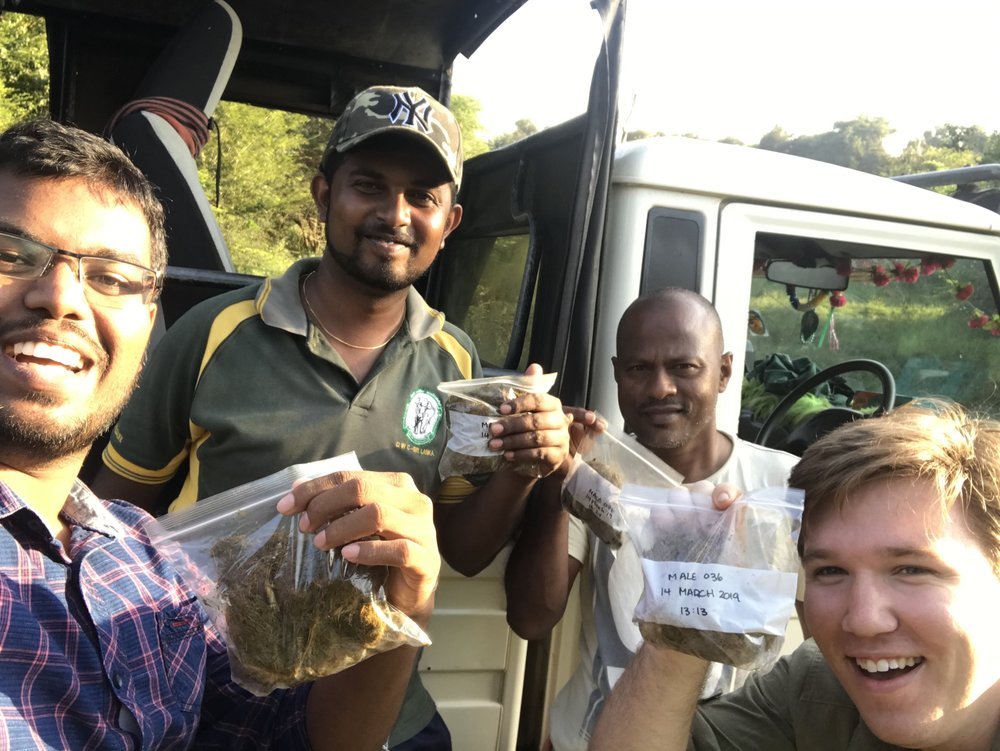Each month, the AES Board of Directors is tasked with discussing and approving worthy grant requests for conservation projects impacting elephants throughout the Asian continent. The recipients of our funding are always so eager to get started on their most important projects. For Chase LaDue, a PhD student at George Mason University and a Fulbright Scholar Researcher, and his research team of Rajnish Vandercone, Wendy Kiso and Elizabeth Freeman, that was no different. And while the global pandemic turned a planned 9-month research project into one spanning several years, they persevered.
Chase has been known to AES Board members since he was an undergraduate student at Canisius College in Buffalo, NY. Moving on to attend George Mason University and becoming a Fulbright scholar was no surprise. Back in 2018, Chase and his team of researchers applied for a grant from AES to support the 9 month long research study in Sri Lanka, in conjunction with Rajarata University. The findings, were recently published in the journal of Applied Animal Behaviour Science, titled Behavior characterization of musth in Asian elephants (Elephas maximus): Defining progressive stages of male sexual behavior in in-situ and ex-situ populations.
The purpose for this study was to get a comprehensive view of how musth behavior in bull Asian elephants affects their conservation management and breeding strategies. During the course of his study of Sri Lankan elephants, Chase followed, observed and identified 62 free ranging male elephants, while creating a comprehensive behavioral profile for each elephant. Researchers then compared his observations from the wild bulls to 26 zoo-managed male elephants. The research resulted in concluding that musth progresses in stages, in both zoo and wild male elephants, and these stages are visually and behaviorally apparent in the elephant. Additionally, musth is affected by social and environmental factors. These findings can be transferred to conservation strategies, more specifically with Human-Elephant Conflict solutions. If communities know more about male elephants in musth, they can better prepare for male elephant coexistence.
Although this study took a little longer than anticipated, it was absolutely worth the wait. AES is proud to support projects like this that have implications for various strategies for Asian elephant conservation. We wish Chase the best of luck as he presents this work for his PhD dissertation defense in the coming weeks.
To learn more about the study and read some of Chase’s blog entries from the early days of the study, click here.
Click here to read the full publication from the journal of Applied Animal Behaviour Science.
Thank you to the entire research team for continuing their important work, despite all the obstacles. To support more research projects, like this one, make a donation to AES to help fund this work.



